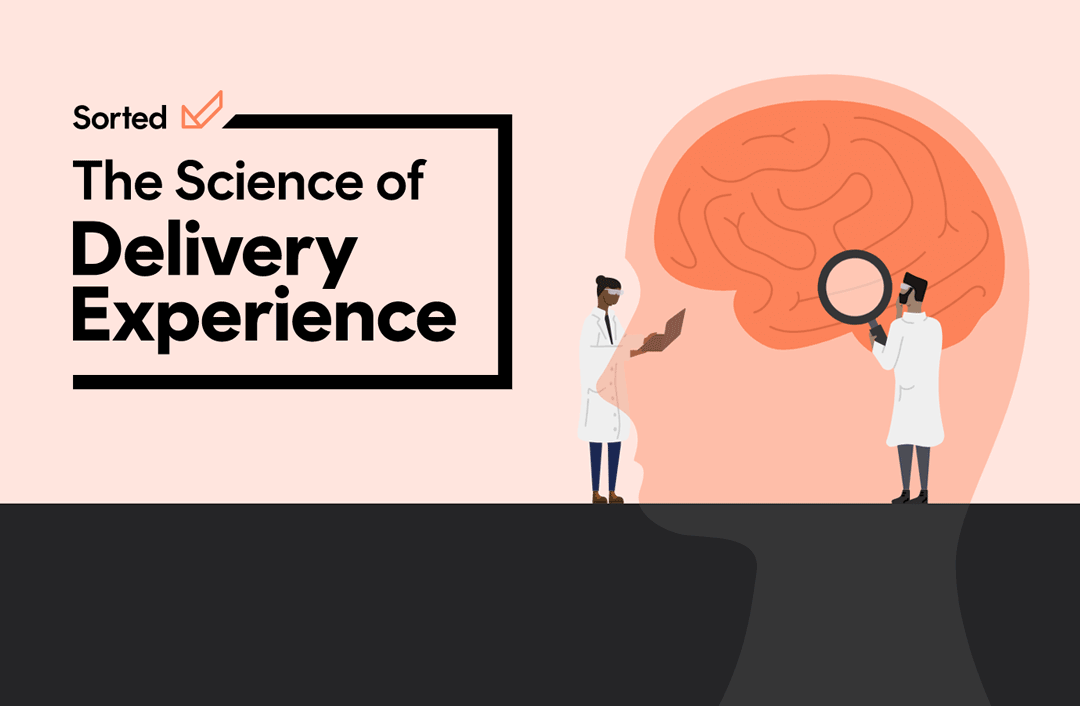
In our brand new report – The Science of Delivery Experience – we’ve enlisted the help of neuroscience doctors to go brain-deep and place the DX of ten leading retailers under the neuroscientific microscope. We share the findings, with actionable takeaways for you, the retailer, so you can turn inspiration into action.
There are some concepts, theories and terminologies included in the report that require a bit of explanation…
To give some background, here’s a quick introduction to neuroscience’s application in retail journey analysis, and some need-to-know language that may come in handy as you read our report.
To start, let’s just highlight that the brain can make an emotional decision in less than a tenth of a second.
As humans, we’re mostly unaware of our subconscious choices, which makes it difficult for customers to tell us about them when we ask.
Rating a checkout experience ‘8’ on an NPS scale is a win, and valuable feedback can reveal that the customer ‘found it hard to find the right product’; but it’s unlikely that a number and a free text comment box will give you insight on how your checkout delivery options left the frustrated customer with a high cognitive load that eventually resulted in them deciding not to add additional add-on items to their basket. All feedback and customer insight methods have their place and, when used together, provide a holistic view of customer opinion, behaviour and emotion. But surveys, questionnaires, interviews, persona focus groups – all our tools for capturing customer thoughts and feelings come with some level of bias or inaccuracy. Simply because customers often give their conscious opinions, but are unable to be aware of their subconscious responses.
Whilst neuroscience isn’t mind-reading, it allows scientists to dig deeper and understand what makes consumers tick under the surface. Neuroscience can be used to predict or measure physiological and emotional responses, using methods less susceptible to bias than other forms of market research.
Here’s a useful glossary to help define some of the interesting concepts included in the Science of Delivery Experience report.
Activation: A physiologic-affective dimension, measured from an experience, that represents the intensity of the response.
Cognitive discomfort: Discomfort not related to physical issues.
Cognitive load: The workload that the brain is supporting at a given time, more precisely that the working memory is supporting at a given time. The higher the cognitive load, the less the ability to process additional information, make appropriate decisions or inhibit other behaviour.
Coherence and congruence of the brand: Strong brands are both coherent (they’re not in contradiction anywhere, like different logos or colours for example) and congruent (continuity of coherence along the whole brand experience, like values and voice for example).
Conscious: Behaviour that reached the consciousness threshold. This represents only approximately 10% of all behaviour.
Dopaminergic: Related to the dopamine reward system. Dopamine is a neurotransmitter that, among other functions, regulates the reward and satisfaction feelings that arise from achieving goals and satisfying expectations.
Emotional response: A physiologic-affective response, usually measured by the combination of the valence (see below) and activation dimensions (see above).
Managing expectations: Expectations are related to the reward system and dopamine levels. Any Service Level Agreement (SLA) expectations in a customer journey could affect the overall evaluation of the experience, so this is why it’s important to manage it.
Melatonin: Related to the sleep process. Melatonin is the metabolic product of the neurotransmitter serotonin. Among other functions, it regulates the circadian rhythm in response to seasons and darkness.
Unconscious: Behaviour that didn’t reach the consciousness threshold. This represents approximately 90% of all behaviour.
Valence: A physiologic-affective dimension measured from an experience. Usually, it’s measured as positive or negative, but it’s more like a comfort-discomfort (emotion) axis.
Visual processing: Cognitive load associated with the processing of visual information (seeing).
For analysis and action plans to help you give your customers a five star customer experience, take a look at the full report here.
